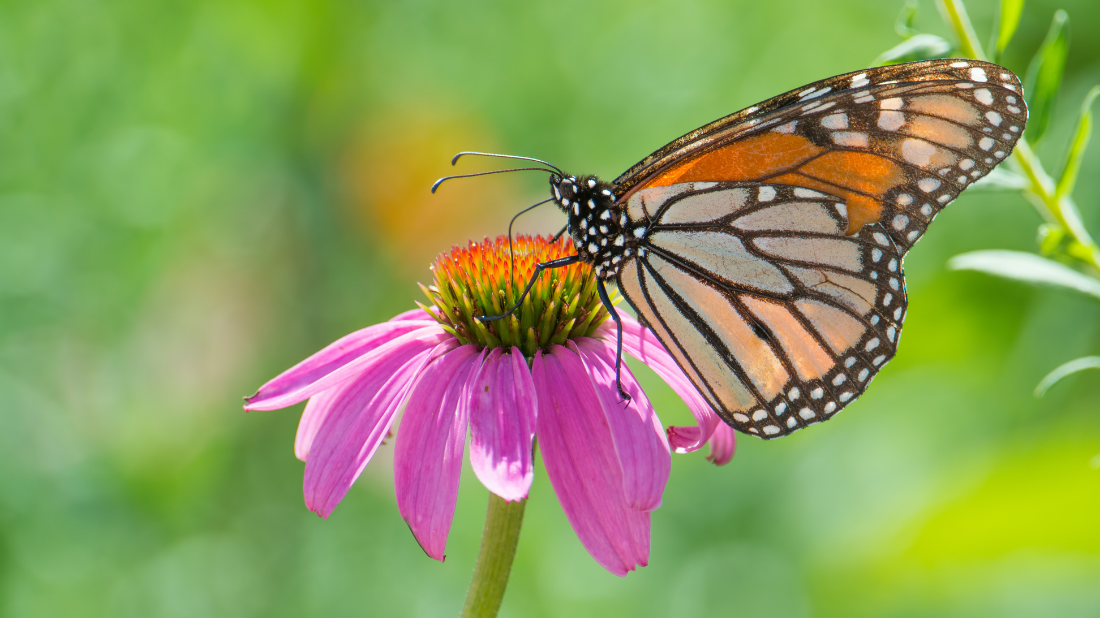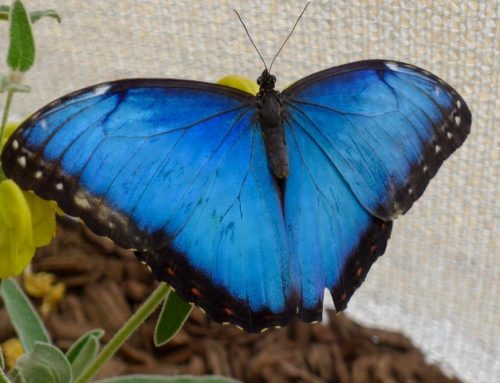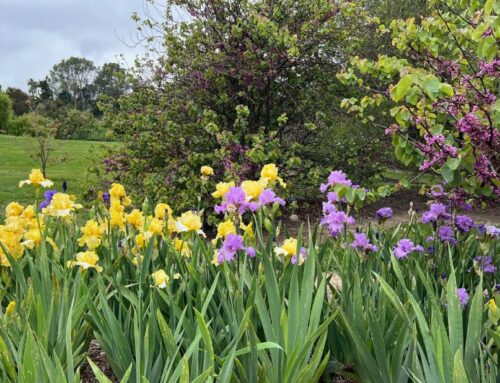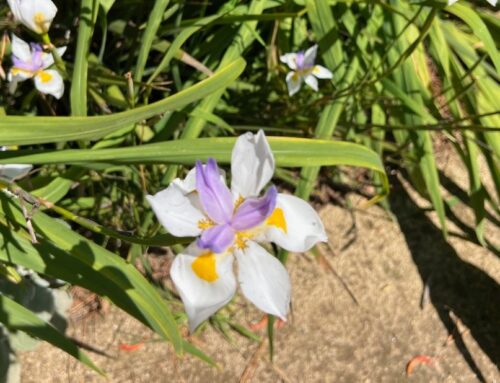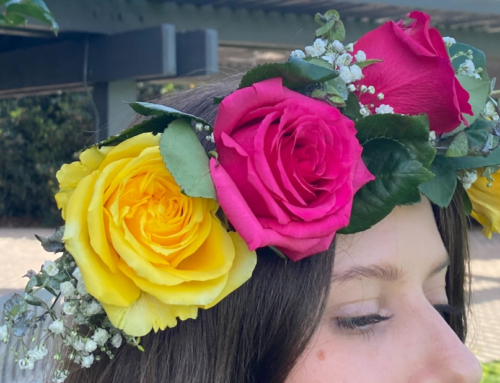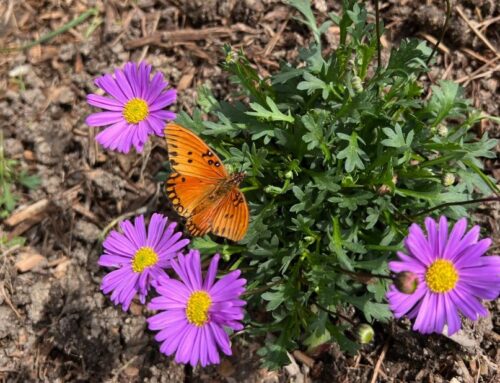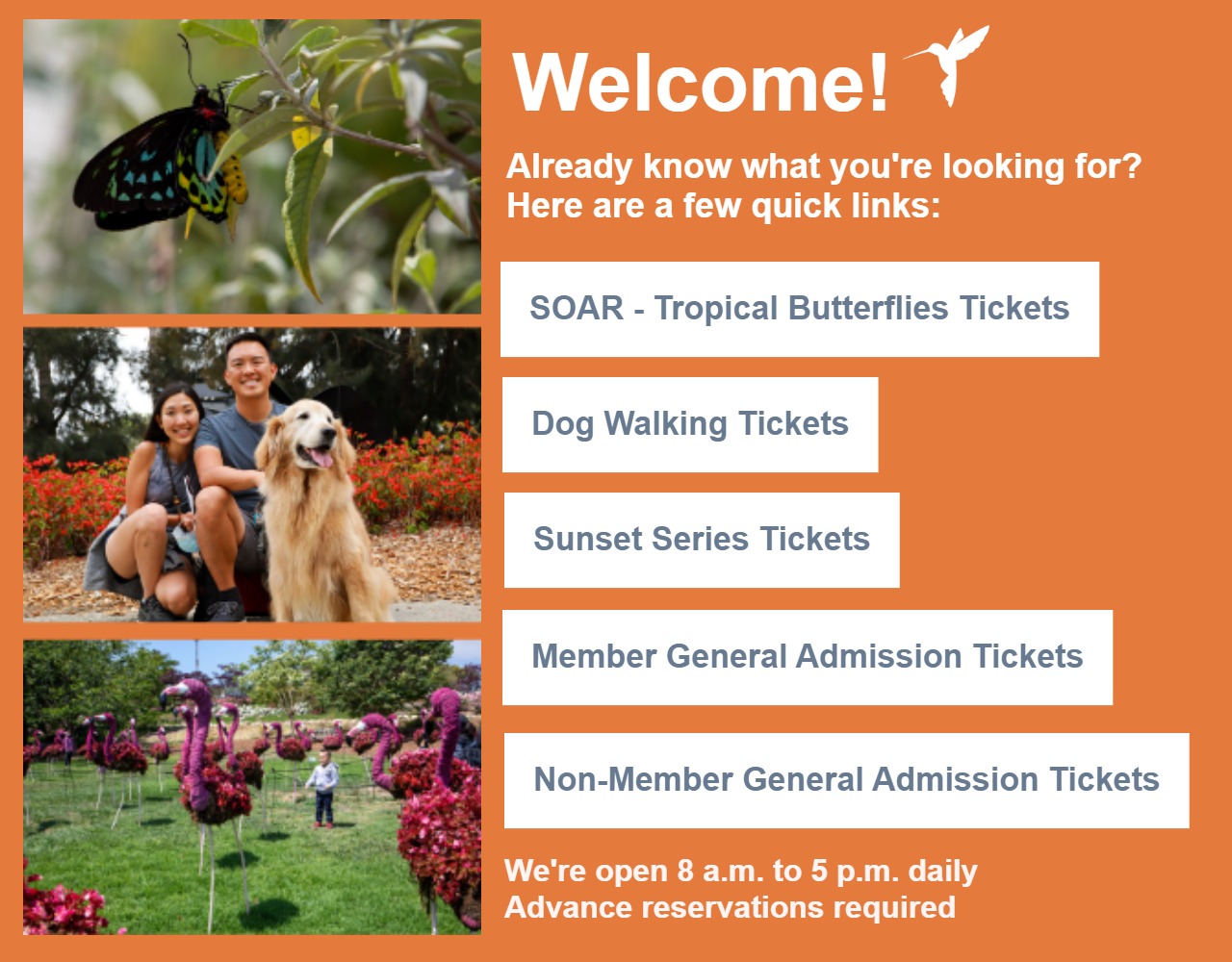SOAR – Monarch Migration is taking on a very important, and spectacular, species. This brand-new exhibit follows in the footsteps of our first exhibit inside the butterfly pavilion, SOAR – Tropical Butterflies, so if you attended that exhibit some of these guidelines may seem familiar. However, Monarch Migration is truly an entirely new exhibit, and this beautiful and endangered species deserves a guide of its own. These guidelines are helpful to know before you go and can help guide your experience once you’re here. So while we encourage you to read them in advance, feel free to also pull this guide back up as you make your way through the exhibit. And please don’t forget to grab a brochure at the SOAR check-in station which will provide invaluable information on how YOU can help save the western monarch population.
FUN FACTS
Ask us about these things when you visit!
- Monarch butterflies are one of the only butterfly species to migrate, and are the ONLY one to have a two-season migration like birds (spring and fall).
- Some monarch butterflies in the USA travel up to 3,000 miles a year.
- Monarch butterflies are poisonous because they feed off of milkweed, which has a poisonous substance on its leaves.
- Monarchs have slow-clapping wings. On average, other butterfly species flap their wings about 20 times per second, while a monarch flaps its wings 5 to 12 times per second.
- The butterflies shouldn’t procreate in the pavilion—it’s not allowed!
KNOW BEFORE YOU GO
- Wearing bright colors, like the colors of your favorite flowers, can attract the butterflies to come closer to you, and maybe even land on you!
- During our Tropicals exhibit, we noticed the butterflies were attracted to hats and masks!
- No strollers or wagons are allowed inside the pavilion, but there is stroller parking available behind the pavilion. Ask an employee or volunteer if you need help finding stroller parking.
- There are butterfly souvenirs available for purchase at our kiosk in Palm Circle, including butterfly books, butterfly gardens, shirts, tea towels, tote bags, seed packets, hats and more.
- On cloudy days, butterflies will not be as active as they are on sunny days. Butterflies are a lot like little solar collectors. Butterflies use the energy from the sun to get them moving. If it is a cloudy day, keep a close eye on the undersides of trees and bushes for roosting butterflies (this is a great way to get an up-close look at them). Ask a SOAR Guide to help you find them inside the pavilion!
- Consider bringing a small pair of binoculars with you, to get a better view of butterflies perched high in the exhibit.
-
Throughout the run of Monarch Migration, our Discovery Stations will be focused on monarch education, including the monarch migration, life cycle and conservation efforts. Our Discovery Station schedule is below.
- Saturdays and Sundays from 10 am to 1 pm, except October 24 and holiday weekends.
- Discovery Stations are facilitated by trained volunteers called Discovery Guides. If you’re interested in becoming a Discovery Guide, please fill out this form.
- SOAR begins before you enter the pavilion with an emergence chamber to view caterpillars and pupae, and a newly planted host and nectar garden that features plants that our western monarchs love.
WHILE INSIDE THE EXHIBIT
- Remember, not all of the butterflies in this exhibit are monarchs.
- Our brochure and signage will help you become a butterfly detective with tips on how to tell the difference between a monarch and a mimic. If you need additional assistance, our SOAR guides are here to help.
- Make sure to take a look at our signs and to grab a brochure. The educational components of this exhibit can help save an entire species!
- Slow down and observe. Butterfly spotting takes patience, especially if you’re trying to become a butterfly detective.
- Watch where you’re walking. The butterflies may go to the ground for warmth.
- Ask questions – staff and volunteers want to help you experience and understand the magic of this beautiful species.
- Look for feeding stations and puddling areas, where you can get a closer view of the butterflies.
- Visit the emergence chamber, where you can watch new butterflies break out of their pupal cases. You might have to wait for a while to see one emerge, but it is well worth it.
- Take lots of pictures! Where else will you have that many butterflies within reach of your camera lens?
- Check for hitchhikers before you exit the butterfly house. Ask a friend to make sure no butterflies have perched on your back. Staff and volunteers will help with this as well.
- Food and drinks are not allowed in the pavilion.
- Stay on the pathways and avoid stepping onto the plant beds.
- Avoid touching the plants or picking the flowers.
- Do not pick up or handle the butterflies, unless a staff member invites you to do so.
FREQUENTLY ASKED QUESTIONS
Q. What type of butterflies are in the pavilion?
A. While monarch butterflies are the focus of this exhibit, we are also highlighting various butterfly species that mimic the monarch’s appearance. We will know which mimics we will be getting as we get closer to the opening of the exhibit.
Q. Where are these butterflies found?
A. Monarch butterflies are native to North and South America. The butterflies in our exhibit tend to be sustainably farmed from butterfly facilities in Costa Rica.
Q. Are the butterflies collected from the wild?
A. NO! Butterfly farmers raised all of the butterflies in this exhibit. Butterflies are raised on these farms specifically for use in butterfly exhibits. These butterfly farmers preserve forests and land all over the world.
Q. How many butterflies are in the pavilion?
A. At any given time, there are about 300-500 butterflies in the pavilion.
Q. How long do the butterflies live?
A. Each species has a different life span, and the conditions in the pavilion allow the butterflies to live up to twice as long as they normally would in the wild thanks to protection from predators and plenty of food. Monarch’s lifespans differ depending on whether they are migratory or not. Wild monarchs that migrate in the fall can live 6 to 8 months while the monarchs that don’t migrate typically live 2 to 5 weeks.
Q. Why is there tropical milkweed near the Pavilion, isn’t it bad?
A. Yes and no! Milkweed has many benefits as a host and nectar plant for monarchs. It is in demand! However, non-native milkweed, like the Tropical milkweed outside the pavilion, can develop parasites in the winter if the plant is not cut back. At SCBG, our gardeners are educated and trained in native and invasive plants, and will care for these plants appropriately to protect plant and animal life.
Q. Why aren’t they flying around?
A. On cloudy days, butterflies will not be as active as they are on sunny days. Butterflies are a lot like little solar collectors. Butterflies use the energy from the sun to get them moving. If it is a cloudy day, keep a close eye on the undersides of trees and bushes for roosting butterflies (this is a great way to get an up-close look at them).
Q. What happens to all of the butterflies at the end of the exhibit run?
A. Because the butterflies have such a short lifespan, they will be allowed to live out the rest of their lives in the exhibit. These butterflies (that were raised by butterfly farmers) cannot be released into the wild due to the potential for disease or any other factors that may harm our local, native habitat.
Q. Can I touch them?
A. Do not try to grab butterflies or pick them up. Butterflies have very fragile wings covered in scales, and touching the butterfly can cause much damage to their wings. If a butterfly lands on you, that is OK. Enjoy the visit of the butterfly, but remember not to touch or grab the butterfly.
The Garden relies on generous donations from our Members, visitors and community to keep access to our 87 acres open for all and to provide unique horticultural experiences that help people find connections with nature. Please help us continue this mission for years to come by considering a gift to the Garden. You can do so here.


